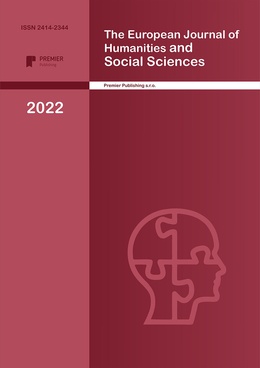Content and language integrated learning of ancient Babylon: antediluvian foundations of a modern approach
Authors
Zverev Ilya Sergeevich

Share
Annotation
A significant number of modern foreign language teaching practices are centuries or even millennia old. Nevertheless, few professionals in the field are actually aware of the history of those practices: retrograde amnesia seems to be a common enough ailment affecting many a foreign language teacher. The present article is an attempt to contribute to the treatment of the ailment in question by providing an overview of foreign language teaching practices of the Fertile Crescent (Babylon and Mesopotamia) and drawing parallels between them and innovative Content and Language Integrated Learning of the present day.
Keywords
Authors
Zverev Ilya Sergeevich

Share
References:
[1] D. Musumeci, “History of Language Teaching,” in The Handbook of Language Teaching, M. H. Long and C. J. Doughty, Eds. Singapore: Wiley-Blackwell, 2009, pp. 42–62.
[2] H. H. Stern, “Fundamental concepts of language teaching,” Oxford Univ. Press, p. 582, 1983, [Online]. Available:
http://books.google.com/books?hl=en&lr=&id=p6T3eo5ltFAC&oi=fnd&pg=PA1&dq=Fundamental+Concepts+in+Language+teaching&ots=C9uR1q3StM&sig=-FF2-Q9yMwIGvZJNIYaLL_mZG9M%5Cnhttp://scholar.google.com/scholar?hl=en&btnG=Search&q=intitle:
[3] A. Abdellah and A. Haridy, “Medieval Muslim thinkers on foreign language pedagogy: The case of
Ibn Khaldun,” Lingua, vol. 193, pp. 62–71, 2017, doi:10.1016/j.lingua.2017.05.001.
[4] D. Coyle, P. Hood, and D. Marsh, CLIL: Content and Language Integrated Learning. Cambridge: Cambridge Univeristy Press, 2010.
[5] “English as a Medium of Instruction | British Council.” https://www.britishcouncil.uz/en/teach/english-medium-instruction (accessed Nov. 22, 2020).
[6] M. Griffith, “Origins and relations to the Near East,” in A companion to Ancient Education, 1st ed., M. W. Bloomer, Ed. Wiley-Blackwell, 2015, pp. 7–25.
[7] Y. Cohen and K. Sivan, “Teacher-Student Relationships: Two Case Studies,” in The Oxford Handbook of Cuneiform Culture, K. Radner and E. Robson, Eds. Oxford Univeristy Press, 2011, pp. 229–247.
[8] I. J. Gelb, “Sumerian language | Britannica.com,” Encyclopædia Britannica, 2016. https://www.britannica.com/topic/Sumerian-language (accessed Dec. 28, 2017).
[9] H. L. J. Vanstiphout, “On the Old Babylonian Eduba Curriculum,” in Centres of learning: Learning and location in Pre-Modern Europe and the Near East, J. W. Drijvers and A. A. MacDonald, Eds. Leiden: E.J.Brill, 1995, pp. 3–16.
[10] H. L. J. Vanstiphout, “How did they learn Sumerian?,” J. Cuneif. Stud., vol. 31, no. 2, pp. 118–126, 1979, [Online]. Available: http://www.jstor.org/stable/1360024.
[11] S. Zamazalová, “The education of Neo-Assyrian Princes,” in The Oxford Handbook of Cuneiform
Culture, K. Radner and E. Robson, Eds. Oxford: Oxford Univeristy Press, 2011, pp. 313–330.
[12] L. Campbell, “Language Isolates and Their History, or, What’s Weird, Anyway?,” Berkeley
Linguist. Soc., vol. to appear, p. to appear, 2012.
[13] W. A. Johnson, “Learning to Read and Write,” in A companion to Ancient Education, 1st
ed., M. W. Bloomber, Ed. Wiley-Blackwell, 2015, pp. 137–147.


